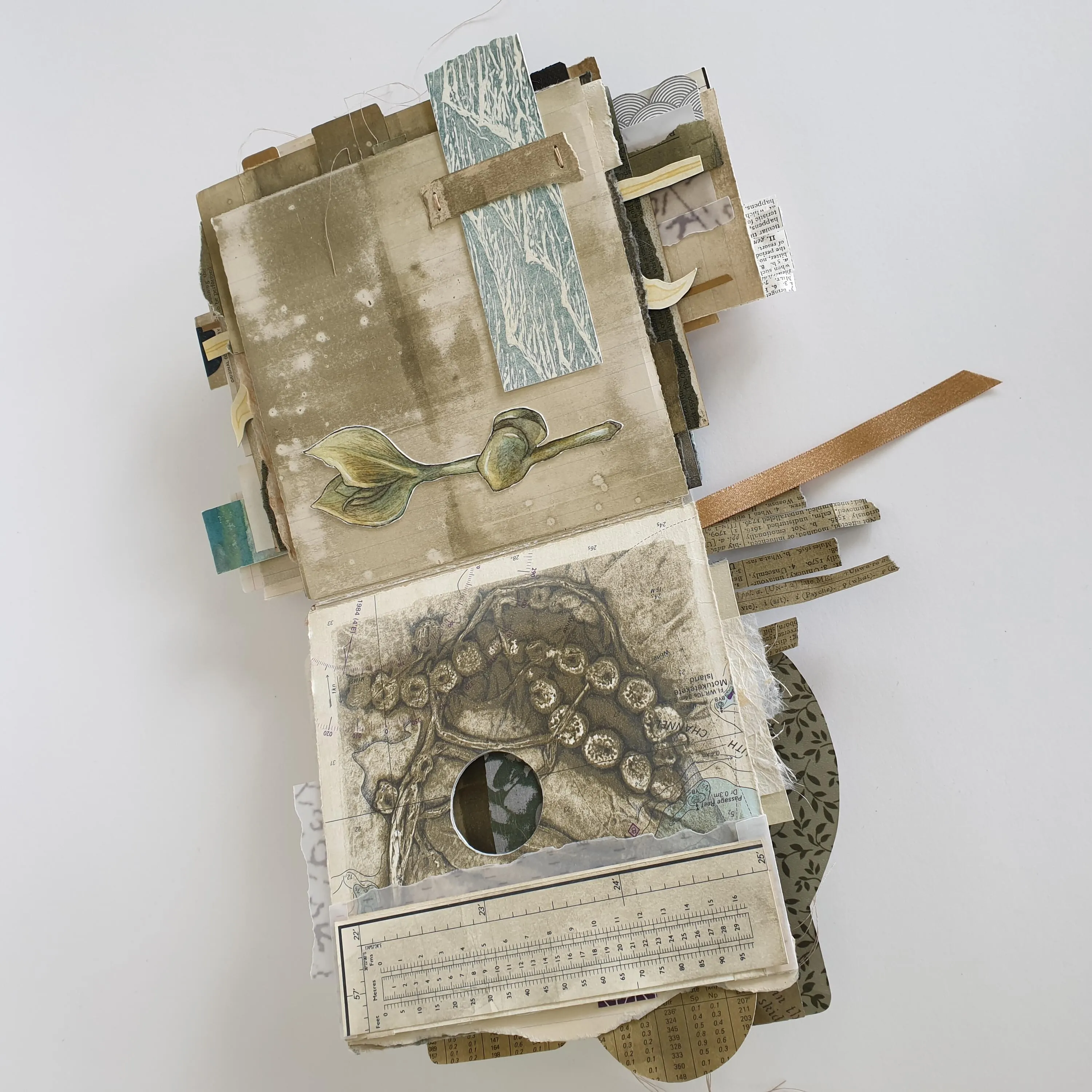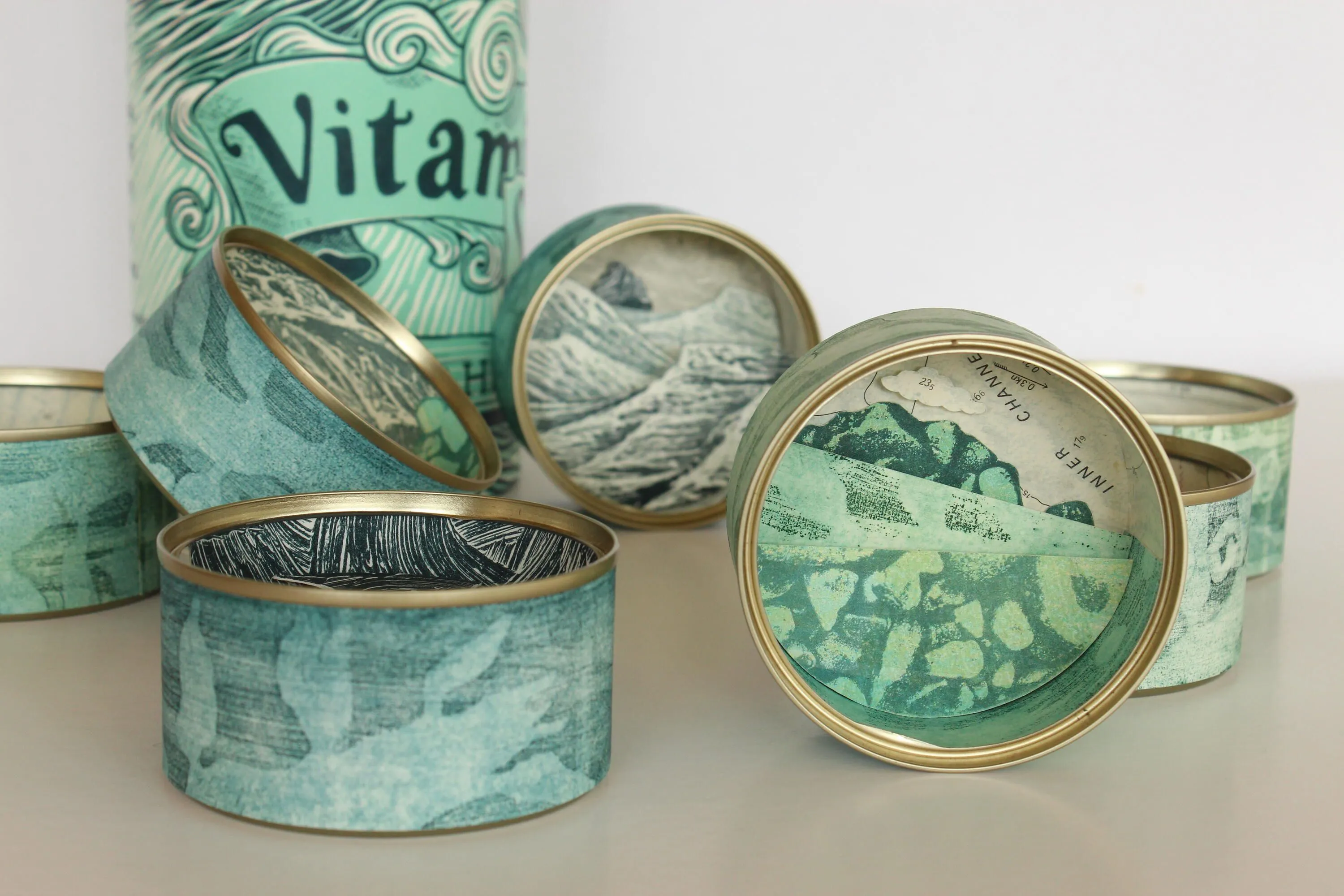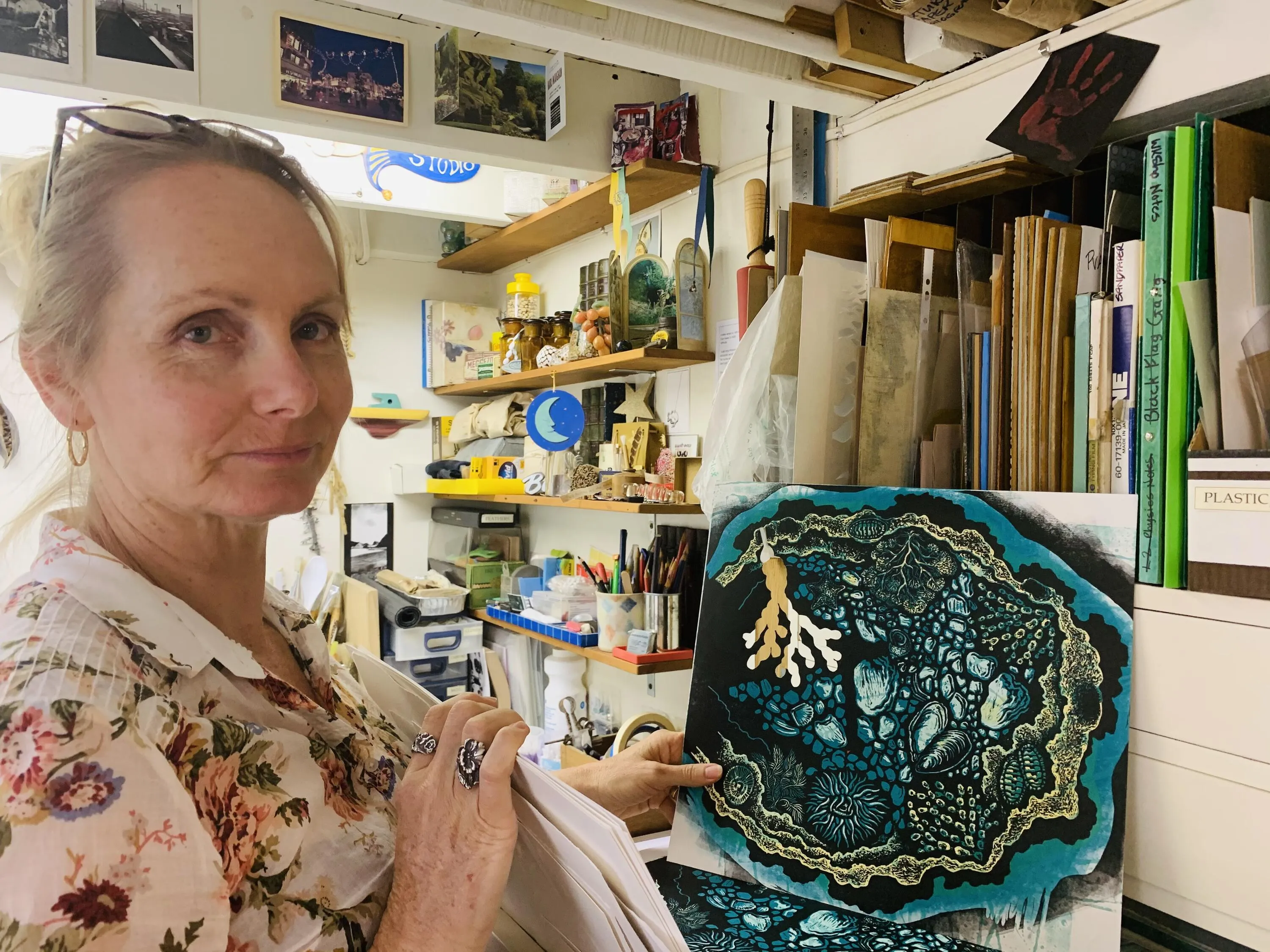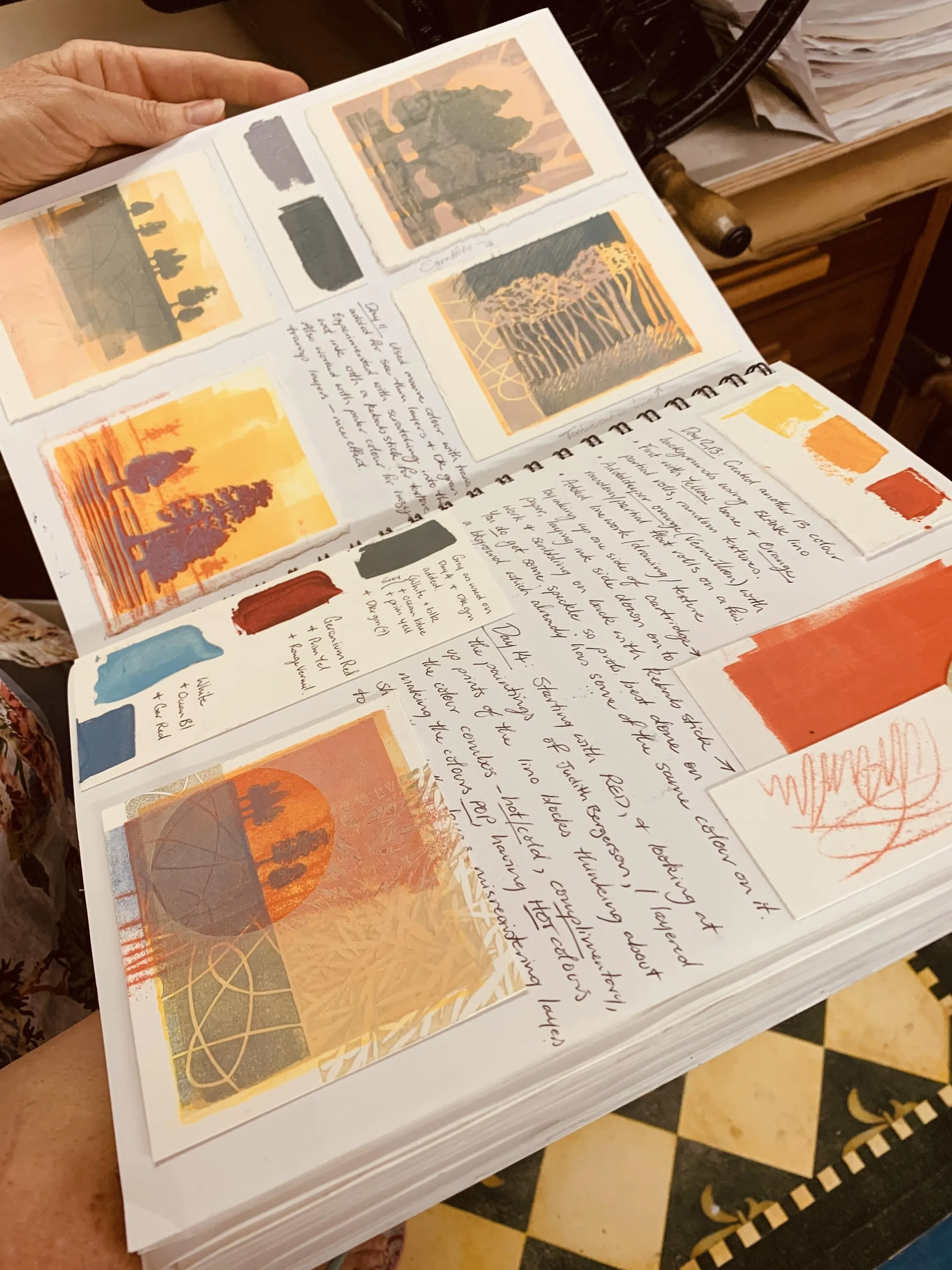Silence the ‘Shoulds’ in Your Head
Written by
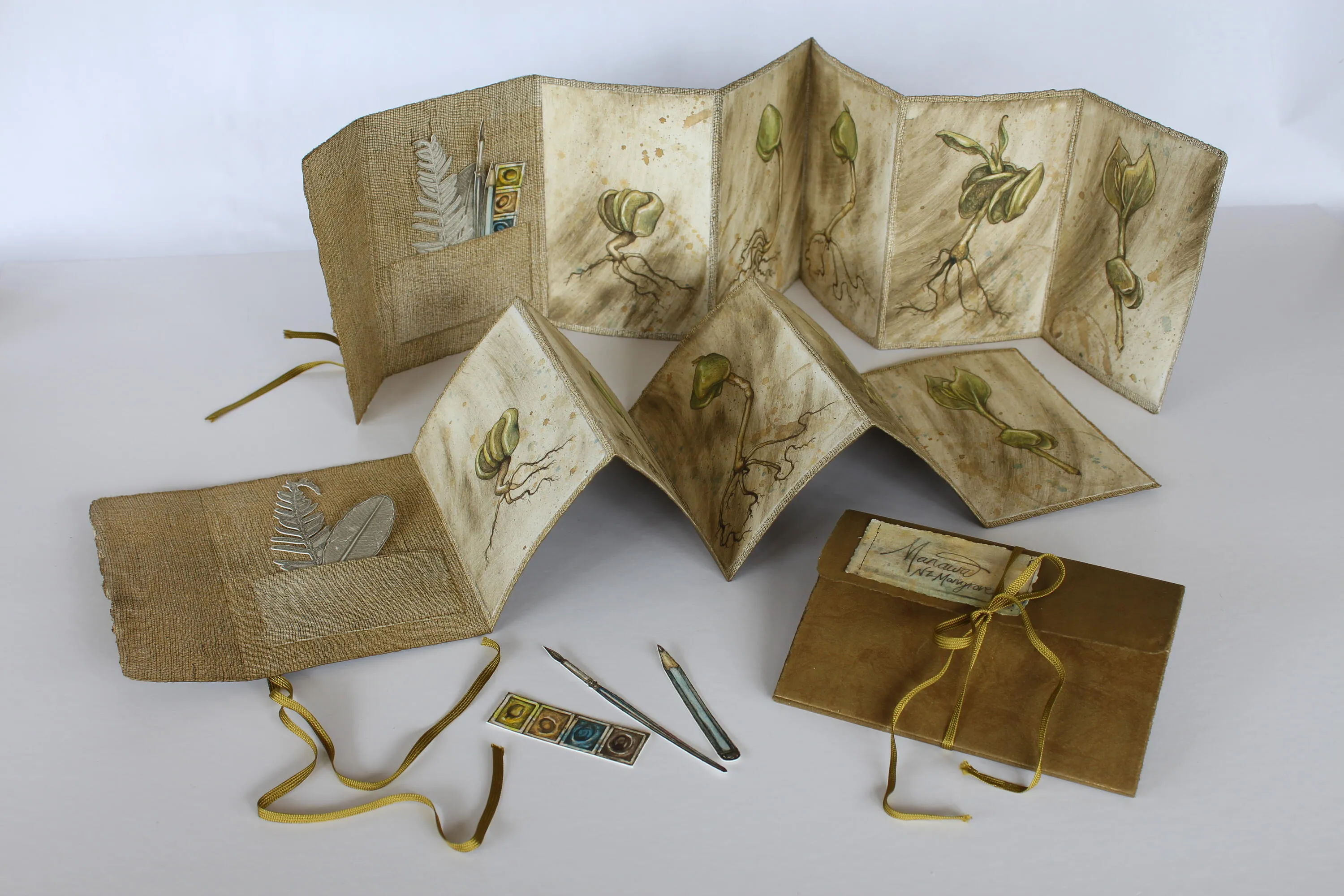
When multi-media artist Toni Hartill gets into her groove down below the house in her large basement workshop, ideas start pinging like popcorn in her head.
She’s currently working towards an exhibition, showcasing her exquisitely layered artist books at the Angela Morton Room, in the Takapuna Library in October. But with multiple projects percolating, she admits, she’s like a cat on a hot tin roof.
Hartill laid the groundwork for her practice when she left school and became a furniture designer before developing as a painter. Then she took a new direction teaching at a secondary school where she was re-acquainted with the allure of printmaking.
It was after an exhibition called Scattered that she started moving away from “normal” printmaking into the 3D realm, where she fuses everything she has learned across various disciplines and media. Her work is enriched by switching between pure printmaking, painting, drawing, creating artist’s books and three-dimensional mixed media sculptural works.
Hartill says she has always been driven to be creative in all areas of her life. She remembers putting together a beautifully documented nature trail around her parents’ garden when she was just 10. And it is that 10-year-old kid inside her that she constantly taps into as she explores colour, texture, pattern and form.
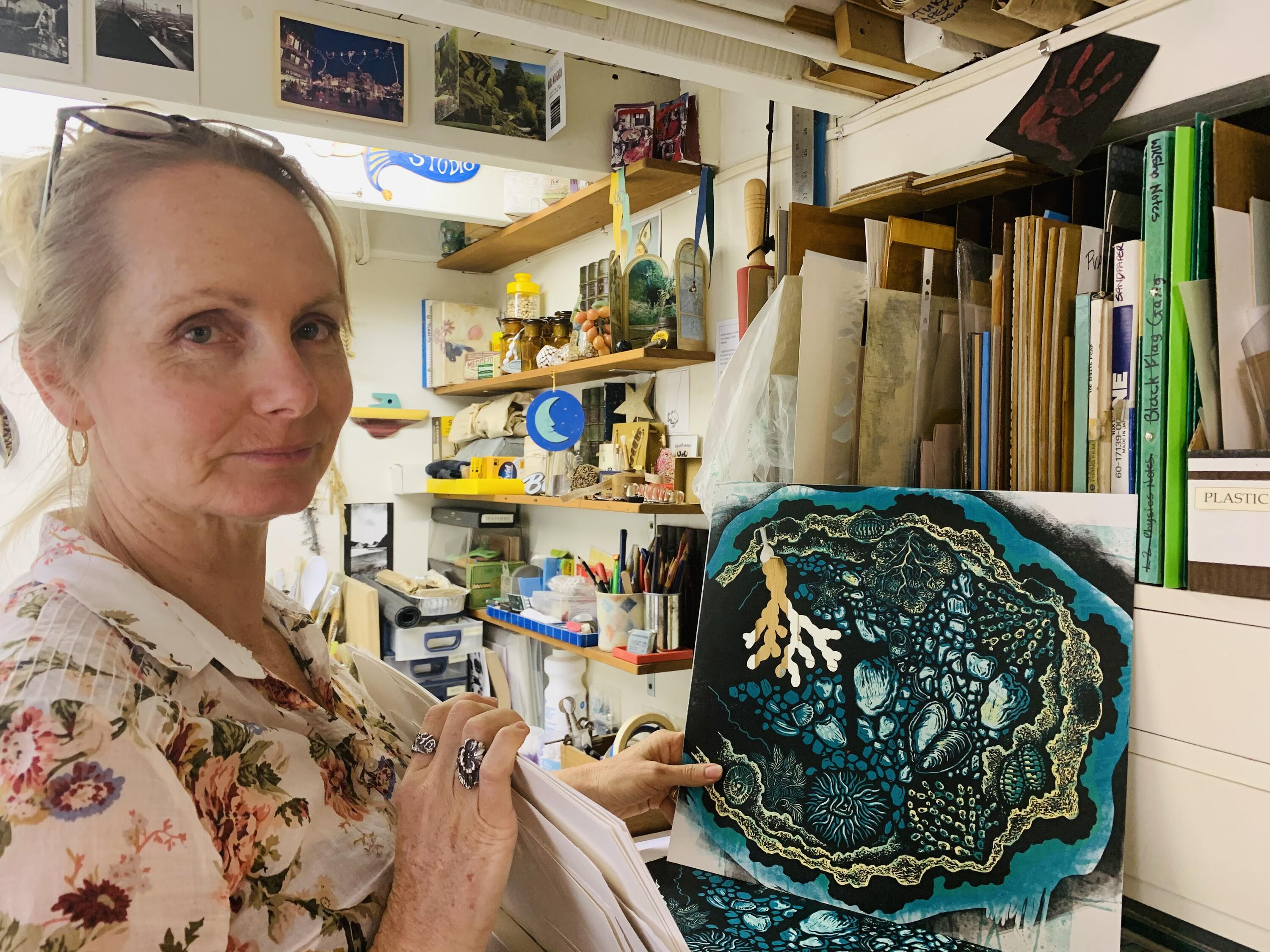
Toni Hartill in her workshop. Photo: Vicki Holder.
Play is important
Hartill is thankful that she’s buoyed by a supportive community of fellow artists through her role as the Auckland rep for PCANZ, the NZ Print Council. Being connected to like-minded people has played a big role in helping her to find her own artist’s voice and build confidence.
She is constantly growing and stretching herself to learn. But she’s also generous with her time and likes to mentor other artists. If there’s one piece of advice she gives all students, it’s to take time in your practice to play.
“Be experimental and allow happy accidents to happen. Don’t be afraid to mess up. There are no rules you have to follow. And if there are, break them and see what happens.
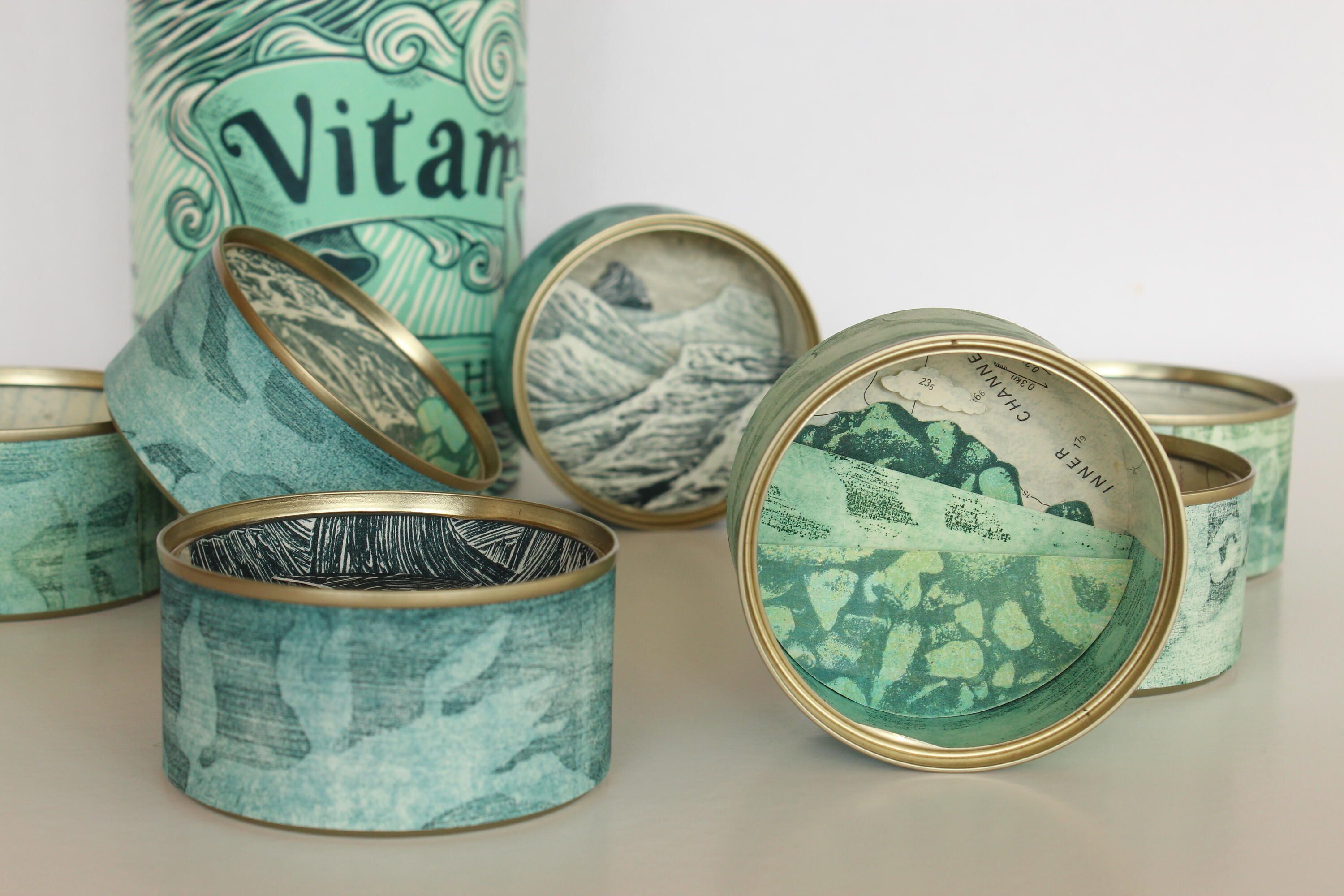
Vitamin Sea by Toni Hartill - various printmaking techniques, tin cans, upcycled charts.
“Do it your way. See if it works. Play, have fun, don’t throw away your mistakes. Keep them, learn from them, look back on them.”
She believes in letting ideas flow. When you follow things down little paths, it’s like a big adventure. “I like the magic of not knowing.”
Use failed attempts to learn & discover
Hartill has a drawer full of failed prints. They are perfect collage fodder for creating artist books, dioramas and multi-dimensional works.
“When something new and unexpected emerges, don’t stick rigidly to your plans. Allow yourself to go off the beaten path. You never know where this will end up. It’s when exciting things happen. You don’t have to make art for an end result.”
She recommends working in multiples, having numerous projects on the go, so there is less at stake if you do mess up. That way, the pressure is taken away.
“Did I mention I get bored doing the same thing?” she says. “I have so many ideas in all directions that I simply can’t stick to one process. I make art in whatever media and format the next idea requires.”
Avoid the 'shoulds'
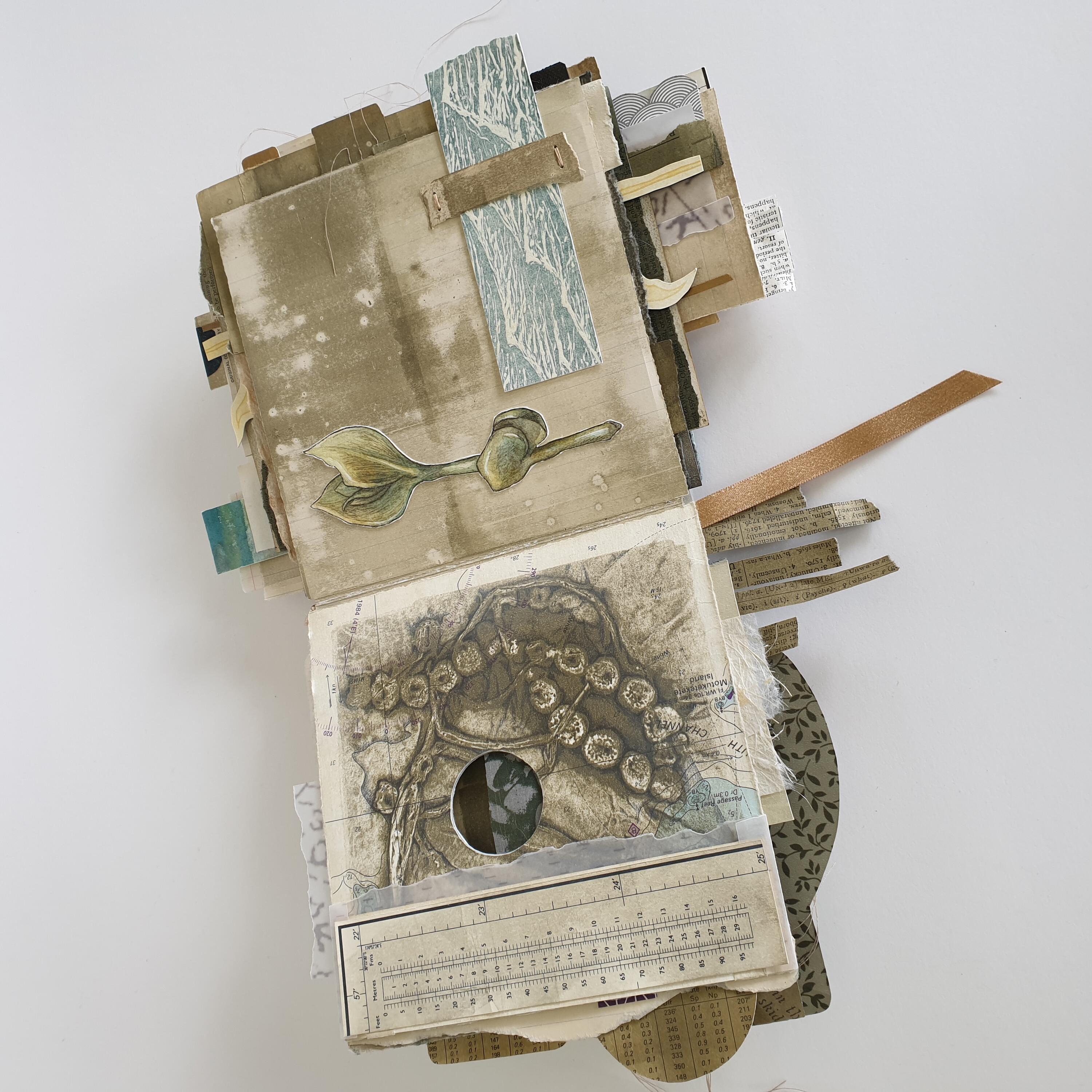
Remanent by Toni Hartill - various printmaking techniques, found ephemera.
Finding her own voice is key to gaining the confidence to move away from the ‘shoulds’ in her head.
“I realise that what makes me want to turn up each day is being more playful and experimental in my work.
“I have struggled with what I think I ‘should’ do. But when the ‘shoulds’ dictate to me, creativity dries up and the whole process of being creative becomes a chore.
“It comes down to confidence, having a belief in your own work and giving yourself permission to follow your own path, no matter what others say.”
While she’s not motivated by financial rewards, Hartill admits she’s lucky as she doesn’t have the pressure of having to monetise her work. The lure of money, she says, can have the opposite effect.
Being tempted by commissions adds intense pressure to “get it right”. You’re set within a box, she says, and there’s an expectation of the outcome, so the creativity is hobbled.
“It doesn’t allow me to work organically and in unexpected directions as new ideas and happy accidents happen.”
Taking a more commercial route can be a faster track to financial return while the art for art’s sake approach is a slow burn. But for Hartill, that’s the more sustainable way because her creativity stays alive.
Do what you love
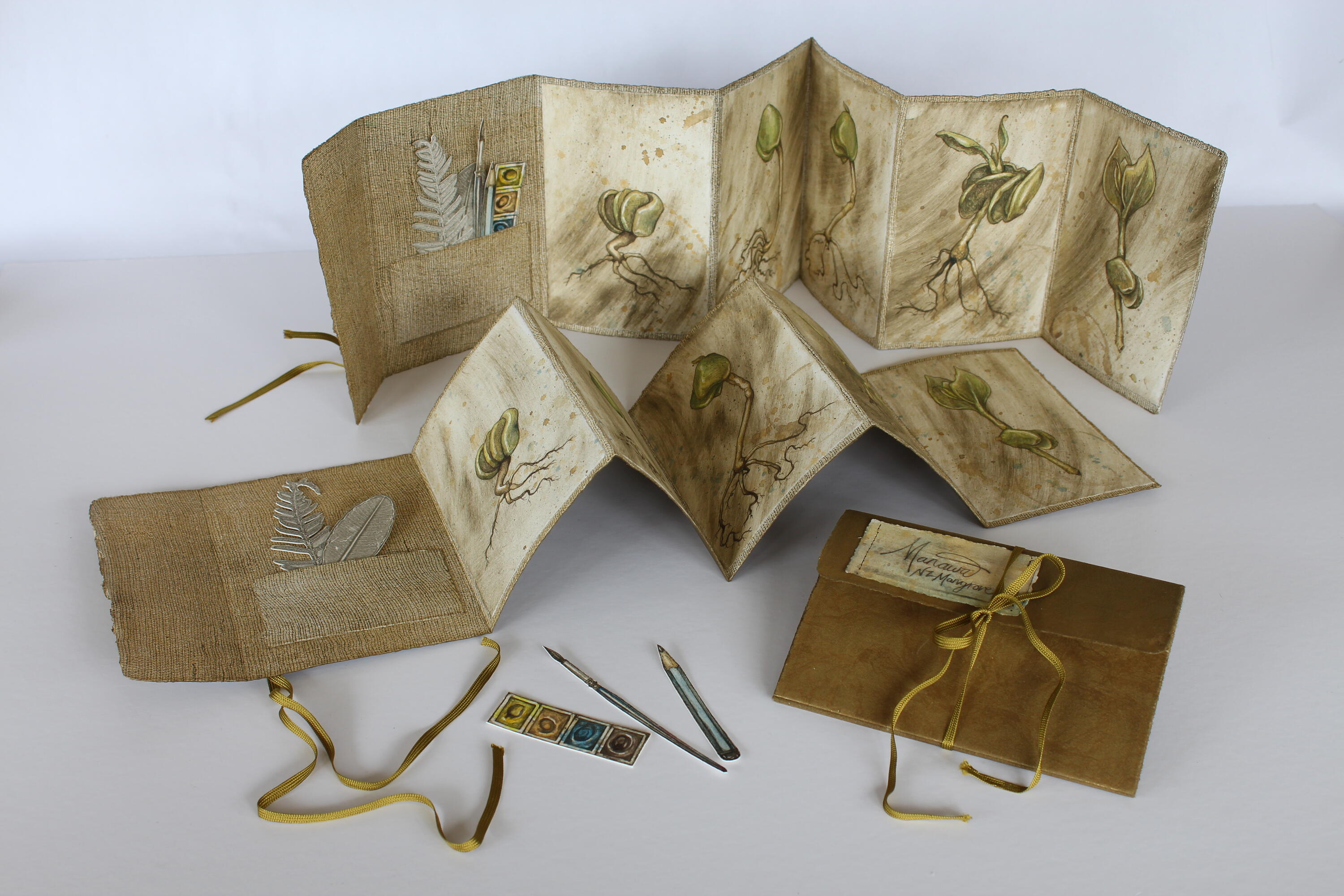
Manawa by Toni Hartill - various printmaking techniques, ribbon.
As an artist, it’s important to pinpoint what it is that you love to do and more importantly, what you most definitely do not.
“One day, I was editioning some drypoint prints and it just wasn’t going well. I soon realised I was not enjoying what I was doing. In fact, I was hating it.
“So I stopped then and there and wrote a list on a scrap of paper. ‘What I love to do in my art.’ And on the other side ‘What I hate to do in art.’ Top of the hate list was editioning drypoint. I have never gone there again.
“Do what you love and stop or minimise what you hate.”
Keep a journal

Documenting your work can be the key to unlocking a new direction. Photo: Vicki Holder.
Hartill encourages artists to be reflective and to keep a studio journal to record their processes, what went well and more importantly, what didn’t. She was getting frustrated making the same mistakes or not being able to pinpoint where she was going wrong.
“Keeping a journal specifically for recording my ideas, processes, colours, materials and techniques helps me focus and to keep moving forward. I also record further steps that I intend to take to try something new. If I don’t write it all down then and there, it is probably lost forever.“
100 ways to change your perspective
If you’ve run out of ideas and exhausted all obvious options, Hartill suggests trying the 100 Day Project.
She has tried this several times and highly recommends it as a way to become unstuck and stretch yourself in new directions. She cuts out squares of paper and tries different techniques on each, making notes on the back, keeping them for future reference.
“It’s a great way to experiment and create an encyclopedia of ideas to get new confidence. You’ll produce work you never imagined.”
Above all, Hartill states, don’t take art too seriously. Do it because it makes you happy.
“Let your own voice come out.”
